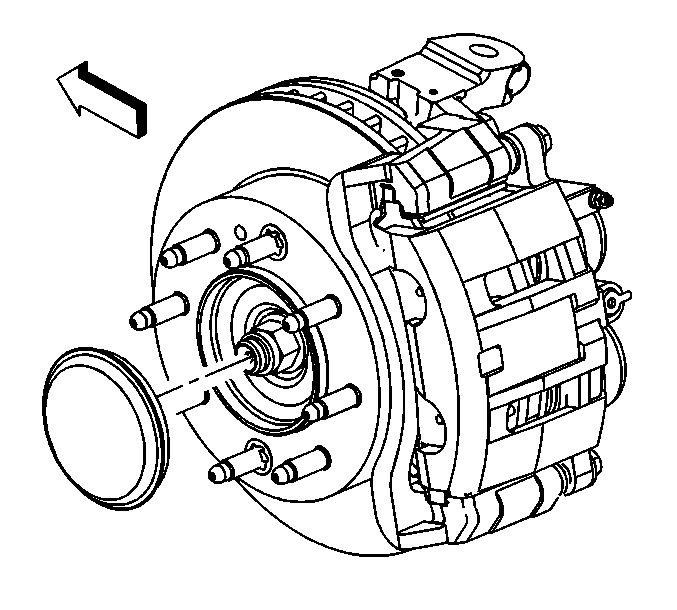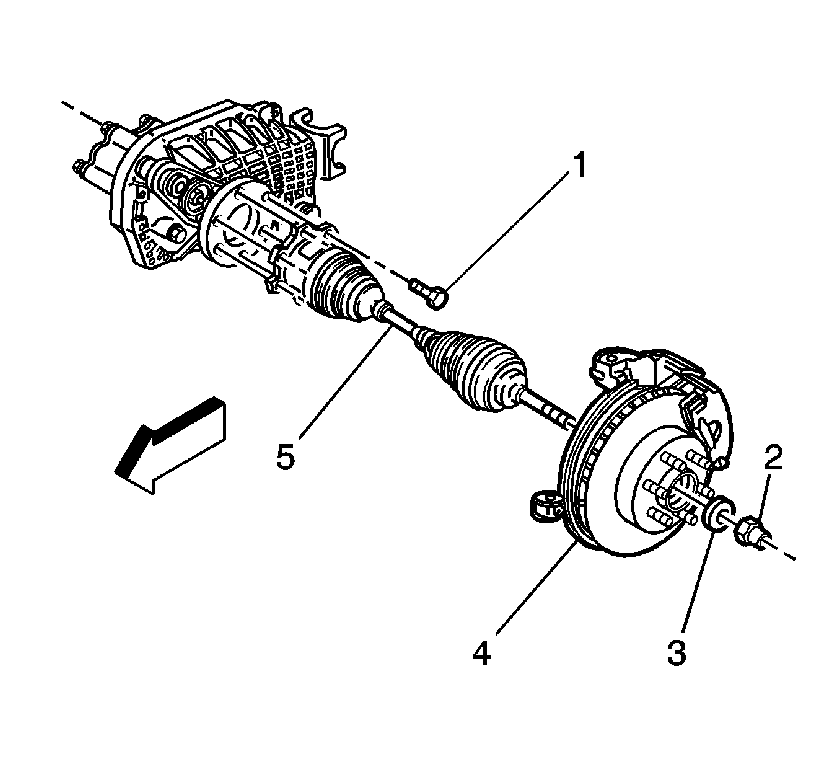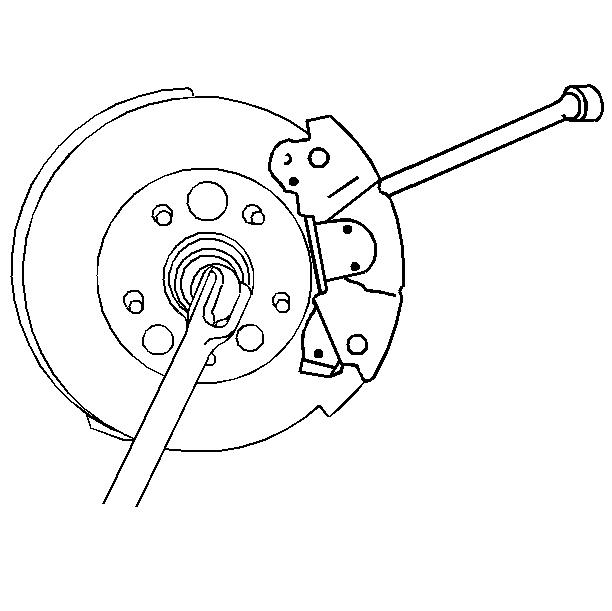Wheel Drive Shaft Replacement 2500
Tools Required
J 45859 Axle Remover
Removal Procedure
Caution: Do not attempt to move vehicle with drive axle(s) removed from wheel bearing. Wheel(s) could fall off, dropping vehicle to the ground and causing personal injury or damage to the vehicle.
- Raise the vehicle. Refer to Lifting and Jacking the Vehicle .
- Remove the wheel and tire assembly. Refer to Tire and Wheel Removal and Installation .
- Remove the drive axle center cap, if equipped.
- Insert a drift or a large screwdriver through the brake caliper into one of the brake rotor vanes in order to prevent the drive axle wheel drive shaft from turning.
- Remove the nut and the washer from the hub. Do not reuse the nut. A new nut must be used when installing the wheel drive shaft.
- Using the J 45859 or equivalent, press the wheel drive shaft from the hub.
- Remove the 6 bolts (1) securing the wheel drive shaft inboard flange to the output shaft flange.
- Remove the drift from the rotor.
- Remove the stabilizer shaft link from the lower control arm. Refer to Stabilizer Shaft Replacement .
- Wrap shop towels around both the inner and the outer wheel drive shaft boots in order to avoid damage to the boots during removal and installation.
- Pull the wheel drive shaft through the lower control arm opening.



Installation Procedure
- Wrap shop towels around both the inner and the outer wheel drive shaft boots in order to avoid damage to the boots during removal and installation.
- Insert the wheel drive shaft splined shank into the knuckle hub.
- Install the washer (3) and the new hub nut (2) to the wheel drive shaft.
- Attach the wheel drive shaft inboard flange to the output shaft flange using the inboard flange bolts (1).
- Insert a drift or a large screwdriver through the brake caliper into 1 of the brake rotor vanes in order to prevent the wheel drive shaft from turning.
- Remove the drift from the rotor.
- Install the drive axle center cap, if equipped.
- Install the stabilizer shaft link. Refer to Stabilizer Shaft Replacement .
- Install the wheel and tire assembly. Refer to Tire and Wheel Removal and Installation .
- Lower the vehicle.

Important: Clean the steering knuckle and the wheel drive shaft splines and threads. These areas must be dry and free of grease, dirt, and contamination.
Notice: Use only a genuine GM front wheel drive shaft nut. Installation of anything but an OEM front wheel drive shaft nut could cause damage to the vehicle.
Do not tighten the new hub nut at this time.

Notice: Use the correct fastener in the correct location. Replacement fasteners must be the correct part number for that application. Fasteners requiring replacement or fasteners requiring the use of thread locking compound or sealant are identified in the service procedure. Do not use paints, lubricants, or corrosion inhibitors on fasteners or fastener joint surfaces unless specified. These coatings affect fastener torque and joint clamping force and may damage the fastener. Use the correct tightening sequence and specifications when installing fasteners in order to avoid damage to parts and systems.
Tighten
| • | Tighten the inboard flange bolts to 79 N·m (58 lb ft). |
| • | Tighten the hub nut to 240 N·m (177 lb ft). |

